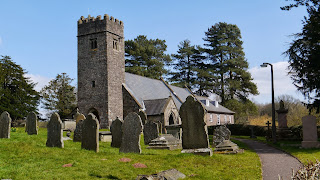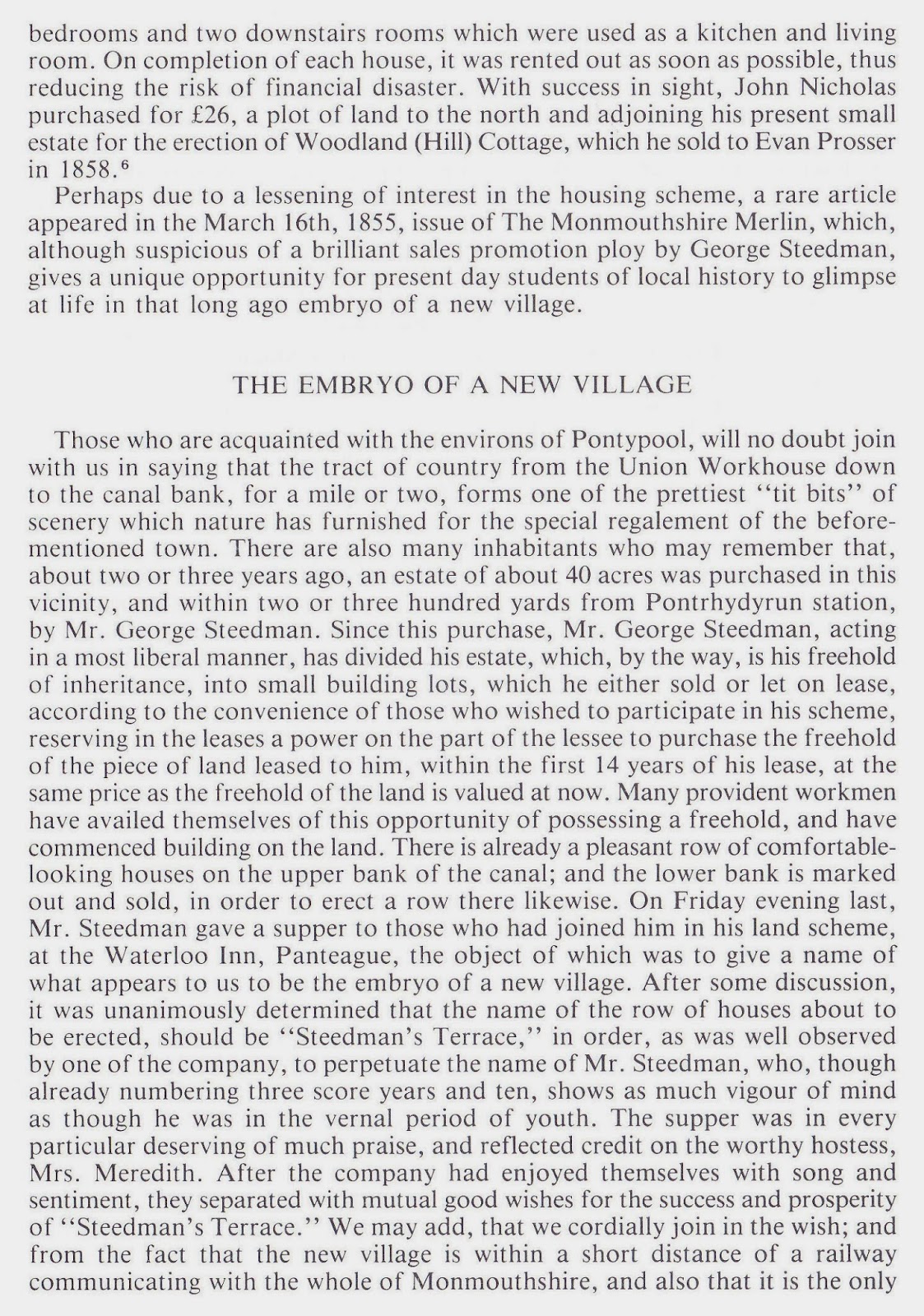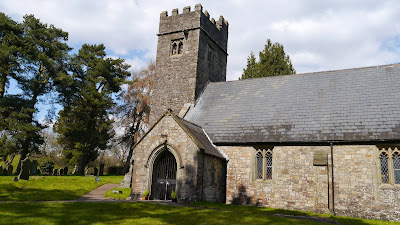A brief History and Development
Architect Drawing of
proposed school
The village of Sebastopol was named
in 1854. At that time it was in the Parish of Panteg in Monmouthshire. Since then the village has seen the county name changed to Gwent and then Torfaen where it currently sits.
In 1860 Rev. Dr David James was Rector of St Mary's Church, Panteg and his enthusiasm and sacrifice ensured a school was built in Sebastopol. This catered for children aged from 4 to 14. Heads of School and Inspectors ensured its
development until a new building was erected over a hundred years later at Elm Grove, Kemys Fawr.
Kemys Fawr school has now also been demolished and flats are planned for the site.
Various attitudes have existed
towards education. In the 19th
century in Gwent “educational provision in many parts ... remained woefully
inadequate. Moreover there was
considerable opposition to the National Society from large numbers of
non-conformists throughout the county who objected to their children being
taught the catechism and having to attend church on Sundays.” (Howell, P.176).
 |
| Rev Dr DavidJames was sent to St Mary's Church, Panteg |
In 1848 the Government set up
an inquiry into the State of Education in Wales. The Commissioners report included the
following comment on the male population:
“Men who had no conception whether York was in England
or Ireland and how many days there
were in a year would argue on the necessity of adult baptism and ...
regeneration; but usually I found them quite ignorant and divested of any
desire for knowledge.”(Roderick, P.150).
The Commissioners felt the
answer was to “tackle their masters.” The business men, employers and
landowners of the day were to be encouraged to invest in the education of the
local population.
There was an
antagonism to the Welsh language. It was felt to be alien and could be used during insurrection.
Education became an important factor in undermining the Welsh language.
(Howell, P.177).
“The Education Act 1870 required all
parents to send their children to school, but they already clearly established that English should be the only
language in those schools.” (Howell,
P.177).
In
1860, as the Rev. Dr. David James was opening his Infants School at Pontymoile
for the children of the tin workers, Father Elzear and Mary Peterson were
arriving in Pontypool, further north.
Sebastopol was not as industrialised, but I feel insights can still be
drawn from the experiences of Mary Peterson arriving in Pontypool:
“...
its streets (were)... narrow, roughly and imperfectly paved, and filthy, the
houses badly built and some in
ruins, dwellings and inmates alike coated over in wet grime and grease.” She found the Catholic children looking for coal on colliery tips and slag-heaps. Families were reluctant, even defiant when asked to send children to the church for schooling. (Anon. P.58 'See you in the Park August')
 |
What remains of the Pontymoile school (opened 1860), now a private house.
The other wing was removed for the byepass and footbridge. |
Rev.
Dr. David James, became
Rector of St Mary’s Church, Panteg, with a stipend from the Hanbury family. It is reported that on his arrival he saw a
young girl teaching a small group of children in a barn belonging to the
Glebe. He realised there was a need for
education for the children of the area. His first priority was Pontymoile National
School (opened March 27th
1860, cost £967) as there was a large population working at the Tin Works. His second priority was to raise funds for a
boys and girls mixed National School in Sebastopol. (LLOYD, W.G., 1992, Sebastopol A Local History, Gwent)
The ladies of Pontypool,
including those of the Hanbury family, organised a 3-day bazaar in their
grounds, later Pontypool Park, to raise funds towards the school build. They set up stalls and sold items of
craftware to the locals.
On 12 August 1861 the
foundation stone was laid.( In a later post I show a handwritten account of the article which appeared in the Free Press of Monmouthshire recording the event.)
On 6 June 1864, Henry
Bell, master, wrote in the School Log that it had opened six weeks earlier (end
April,) to cater for 350 children, opening 9.30-12 noon, then 2-4.00pm. Although master, he too was learning. After a large delivery of pens, slates, copy
books, pencils, etc. he comments that the “new apparatus saves trouble and
ensures better progress. Children not so
noisy, either.” Then a few days later
“Ruled the slates on one side and the writing is better.”
H M Inspector of Schools
reported good results in July 1867, and Henry was certificated. The grant
claimable against results amounted to £28.2s.2d. (£28.11p).
Geography was next to be included as an extra
subject. In July 1868, Mr Binns, the
inspector, commented that either Europe or England would be sufficient regards
an extra subject, and the first book of Samuel was quite enough for one year.
Henry proposed second book of Samuel for the following year.
 |
| St Oswald's Church, originally intended as an extension to the school |
An extract from the school log showing 1869 as a more
innocent time:
“A man called here
desiring to get liberty to give an entertainment to the children, each to pay 1d. I gave him permission. It
commenced at 3.00 after playtime and was first on the Pilgrim’s Progress, which he had illustrated by very large
pictures on canvas. Afterwards, sleight
of hand, tricks and ventriloquism occupied the time till 4 o’clock. About 90
children attended.” (Bell.
1869).
In
December 1869 a boy would not do as Henry wanted “so had to be severely flogged
to make him obey, which I (Henry) didn’t
want to do.” (Bell, 1869). By the 1920’s a punishment book and written procedure
were instituted and forms were required to be completed when using an
“ordinary” cane. These were kept in the Master’s office.
16 January 1872 William
Davies took charge.
In the school log he entered the date and then added ‘AD’ after it, showing a
fastidious nature. School opened in Wesleyan Methodist on Greenhill Road due to people in the
house adjoining the Wern school building having smallpox. The Wesleyan Methodist building still exists in Sebastopol, although now it consists of three houses. On maps it was shown as the Ebenezer Chapel.
“I
find the children very dirty and rude, but this may be accounted for by the
school having been closed a longer
period than usual,” commented Mr Davies in 1872.
William
commenced teaching form, colour and object lessons and commented that the
children were backward and could not do sums from the standard below, also
backward in notation. The school was
disinfected and classes resumed at the end of February 1872.
In 1872 a grant of
£30.6.0d. (£30.30p) was made. The standard was poor, due possibly to a change of teachers
and the outbreak of smallpox. A pupil
teacher was to be appointed.
By 1879 it is clear from
the log that greater care was being taken as to the accuracy of information records
for pupils. A Resolution was issued indicating a Birth Certificate or
Declaration by a parent was to be used to enter a child’s age in the “Child’s
School Book.” This was signed by Edmund B. Edmunds, Clerk to the Guardians of
Pontypool Union.
Although by December 1884
the grant on results, including Pupil Teachers (2) had increased to £127.4s.
4d., a short but rather telling entry was made 16 February 1885 “A urinal is
wanted.”
15 March 1905 an entry in
the visitors book from H Owen Davies states:
“Visited the school to
find everything working most satisfactorily.
229 present from 234. Distributed
25 certificates of merit awarded by the United Kingdom Band of Hope Union for excellent in the reporting of a lecture on
“The Nature and Effect of Alcohol.” 25 essays were sent in and a certificate for excellence was awarded in each
case. A fact which speaks most highly of the school.”(Davies
1905).
Visitors were recorded
from Germany, Gloucester, Liverpool and Merthyr.
23 October 1911 Panteg
Wern Council School was erected on the opposite side of the road to accommodate
400 pupils. (This was later to be known as The Were School.) The infants under 8 remained
in the original building next to the canal, and the older pupils moved to the
new building. (Lloyd, P.102).
By 1935 T Morris was the head of
an outward looking school. They employed
a Lecturer on Temperance and Hygiene. Labour Exchange staff made annual visits to
interview leavers.
158 children visited The Doric at Newport Dock, “Thousands of
children, hundred of teachers made it impossible to survey the ship,” reported Mr Morris.
Six copies of “Great Welshmen of Modern Days,” by Sir
Thomas Hughes were received.
In 1936, 8
Girls and 2 boys visited the Swimming Baths with Miss M. F. Morgan.
Health was still an issue
as carriers of diphtheria germs were ordered back to school by the Medical
Officer, and in 1937 Mrs D Lea Banner BA of King Edward VIII Welsh National
Memorial Assoc lectured standards V, VI, VII for an hour on the prevention of
tuberculosis. The Sanitory Inspector
took samples of atmosphere in 1st classroom boys and Std. I.
In 1941 with Mr A Williams
of Varteg as head, there was talk of “merged evacuees,” and their listing on a separate register. This year also saw a Circular advising on a
tube of cream being sent from Messrs Ferris & Co., Bristol for the
treatment of burns. At this time there
were still open fires and turtle stoves in the building with minimum of precautions to keep the children away. Children were still missing school to help
with the harvest, but the school was asking details of the type of work
performed. The school was now requesting more specific and detailed information than just "helping on the farm."
Notification to female teachers
regarding marriage was issued in 1941, advising their appointment would be
terminated when they married.
 |
| St Oswald's Close, Sebastopol, the site of the old infants school. |
PT and dancing was
introduced by 1948, and 30 pairs of plimsolls of assorted sizes were ordered.
Mr Jones tuned the piano. (From first-hand experience, these
plimsolls were not given to individual children but kept in a box, brought out
at the beginning of the lesson, and then put away afterwards. The shoes were not paired so children would rummage trying to find two the same size but opposite feet. Many children were seen running around the hall with two left shoes (or right). The problem of foot hygiene seems to have been unknown.)
8 September 1949,
Pontypool Wern Secondary Modern School was formed, (using the building already allocated to the older pupils) following the re-organisation
of the area’s schools system. Children
aged 11 and over who had failed the 11+ examination would be sent here, from
Pontypool Wern, Griffithstown, New Inn, Upper Cwmbran, Croesyceiliog. However,
Croesyceiliog pupils were kept home pending a bus as parents felt it too far for them to walk.
I attended Sebastopol Infants
1950-1954. The stone building with
moveable, sliding partitions separating classrooms from the main hall is still vivid in my memory nearly sixty years
later. Children attended aged 5 to 8, but in
exceptional circumstances children could start at 4. The classrooms differed very little from
photographs in “The Early Education of Children,” 1910 (Appendix 5).
Occasionally we were allowed to play across the road from the school on the very rough waste
ground left from the demolished brick works, now the playing field pictured below.
 |
The site of the brickworks opposite the school. The derelict site was
a play area for pupils. Now an official playing field. |
St Oswald’s Church remains
in use. It was originally erected to be
an extension to the school, but was never used as such.
The Pontypool Secondary Modern was demolished around the 1970s, and is
now the site of Pensioner Bungalows and a few houses.
 |
| St Oswald's Church |
The population reluctantly
accepted the school, but soon took advantage of the education. The school log books show a gradual increase in
attendance figures and the commencement of an evening class.
In the 1940s children from nearby villages combined
to attend the Wern Secondary School where children of similar age and ability
could be taught together. Standards
improved over the sixty years covered in this report, confirming Rev. Dr. David
James’ efforts to erect this school was a worthwhile endeavour. He’s owed a debt for providing a facility
which started so many children on the road to a sound education and successful
career. At Wern National School,
Secondary School and Kemys Fawr, dedicated teams of teachers have worked hard
to educate generations of schoolchildren.
Around the 1960s, Sebastopol Infants School moved to a custom built building on Kemys Fawr Council Housing Estate, and the original building was demolished. Due to lack of pupils, Kemys Fawr school closed in August 2013.(Appendix 4).
Some interesting
characters have emerged during my research perhaps worth further investigation:
Rev Dr
David James
Isaac Butler
R.G. Thomas, Architect of
the school
The Hanbury family
Steedman family, original
landowners





















